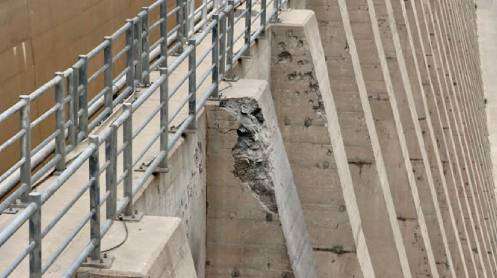MUZAFFARABAD, May 9: In a significant development with potential regional implications, Chairman of the Water and Power Development Authority (WAPDA), Lt Gen (Retd) Sajjad Ghani, visited the Neelum-Jhelum Hydropower Project (NJHP) site to assess the extent of damage caused by Indian shelling during the early hours of May 7. His visit aimed to evaluate structural integrity and boost staff morale amidst heightened tensions.
According to project officials, the shelling began at approximately 1:15am and lasted for nearly six hours, damaging key infrastructure. Critical components affected include a hydraulic power unit of the intake gate, reinforced concrete structures at de-sanders 1 and 3, as well as residential facilities and a medical unit, including an ambulance.
Condemning the assault as a blatant violation of international law, Mr. Ghani emphasized that targeting water infrastructure, especially during conflict, breaches the Geneva Conventions and universally accepted wartime norms. “The cowardly enemy’s attack is unacceptable and constitutes an act of war,” he stated. “Even in World Wars I and II, such vital infrastructure was spared.”
He warned that had the NJHP’s automated systems been compromised, the resulting disaster could have triggered catastrophic flooding from Muzaffarabad to Mangla. “Thank God, our automated system remained intact. The nation narrowly avoided a massive disaster,” he noted.
Mr. Ghani lauded the courage and swift response of the on-site technical staff for preventing further escalation. He was accompanied by NJHP Company CEO Muhammad Arfan Miana, project directors, and senior engineers responsible for operations and maintenance.
The incident has drawn widespread condemnation. Inter-Services Public Relations (ISPR) Director General Lt Gen Ahmed Sharif Chaudhry termed the attack a “flagrant violation of international law,” warning of the severe humanitarian and environmental risks it posed.
The 969MW NJHP, a strategic asset in Pakistan’s power generation mix, had already ceased operations on May 1 due to technical issues in its Headrace Tunnel. Earlier, in April, two of its turbines were shut down after pressure reductions, bringing the entire facility offline shortly after a brief return to full generation.
Story by Tariq Naqash
Khalid Hasnain in Lahore also contributed to this report







